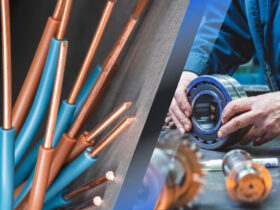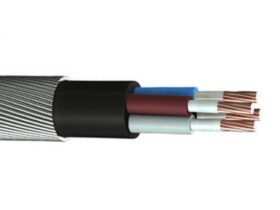Fires can occur unexpectedly, causing significant damage to property and endangering lives. It is critical to ensure that your home or workplace is equipped with the appropriate safety equipment to prevent fires and minimize their impact. One such critical safety measure is the use of fire survival cables. Relemac Cable, a leading manufacturer of electrical cables, has developed a range of fire survival cables designed to withstand high temperatures and prevent the spread of fires. In this blog post, we will discuss the features and benefits of Relemac Fire Survival Cables and how they can help keep you and your property safe.
What are Relemac Fire Survival Cables?
Relemac Fire Survival Cables are specially designed electrical cables that are used in applications where fire safety is critical. These cables are constructed using special materials that allow them to maintain their structural integrity and electrical performance even at high temperatures. In the event of a fire, Relemac Fire Survival Cables can continue to function for a specified period, providing critical time for occupants to evacuate safely and firefighters to tackle the blaze.
Features of Relemac Fire Survival Cables
- High-temperature resistance
One of the primary features of Relemac Fire Survival Cables is their ability to withstand high temperatures. These cables are designed to maintain their electrical and mechanical properties even when exposed to temperatures exceeding 750°C. This feature is critical in preventing the spread of fires and providing safe evacuation routes for occupants.
- Halogen-free and low smoke emission
Relemac Fire Survival Cables are halogen-free, meaning they do not contain any harmful halogens such as chlorine or fluorine. This feature makes them safe for use in confined spaces such as buildings and tunnels. Additionally, Relemac Fire Survival Cables emit low levels of smoke, reducing the risk of smoke inhalation during a fire.
- Durability
Relemac Fire Survival Cables are designed to withstand harsh environmental conditions, including exposure to moisture, chemicals, and UV radiation. These cables are constructed using high-quality materials that make them resistant to corrosion and abrasion, ensuring their long-term reliability and durability.
- Wide range of applications
Relemac Fire Survival Cables can be used in a wide range of applications, including power and control wiring, fire alarm systems, emergency lighting, and other critical building services. These cables are suitable for use in buildings, tunnels, mines, and other hazardous environments where fire safety is critical.
Benefits of Relemac Fire Survival Cables
- Increased safety and protection
Relemac Fire Survival Cables are designed to provide increased safety and protection in the event of a fire. These cables can prevent the spread of fires and provide critical time for occupants to evacuate safely.
- Compliance with safety regulations
Relemac Fire Survival Cables comply with international safety standards and regulations, ensuring that your building is compliant with local codes and regulations.
- Reduced downtime and maintenance costs
Relemac Fire Survival Cables are durable and long-lasting, reducing the need for frequent maintenance and replacement. This feature translates into reduced downtime and maintenance costs, ensuring that your building remains operational at all times.
- Peace of mind
By using Relemac Fire Survival Cables, you can have peace of mind knowing that you have taken the necessary steps to ensure the safety of your property and its occupants. These cables provide a reliable and effective solution for fire safety, allowing you to focus on your business or personal life without worrying about potential fire hazards.
Conclusion
Relemac Fire Survival Cables are an essential safety measure for any building where fire safety is critical. These cables provide increased safety and protection in the event of a fire, comply with safety regulations, reduce downtime and maintenance costs,













Leave a Reply